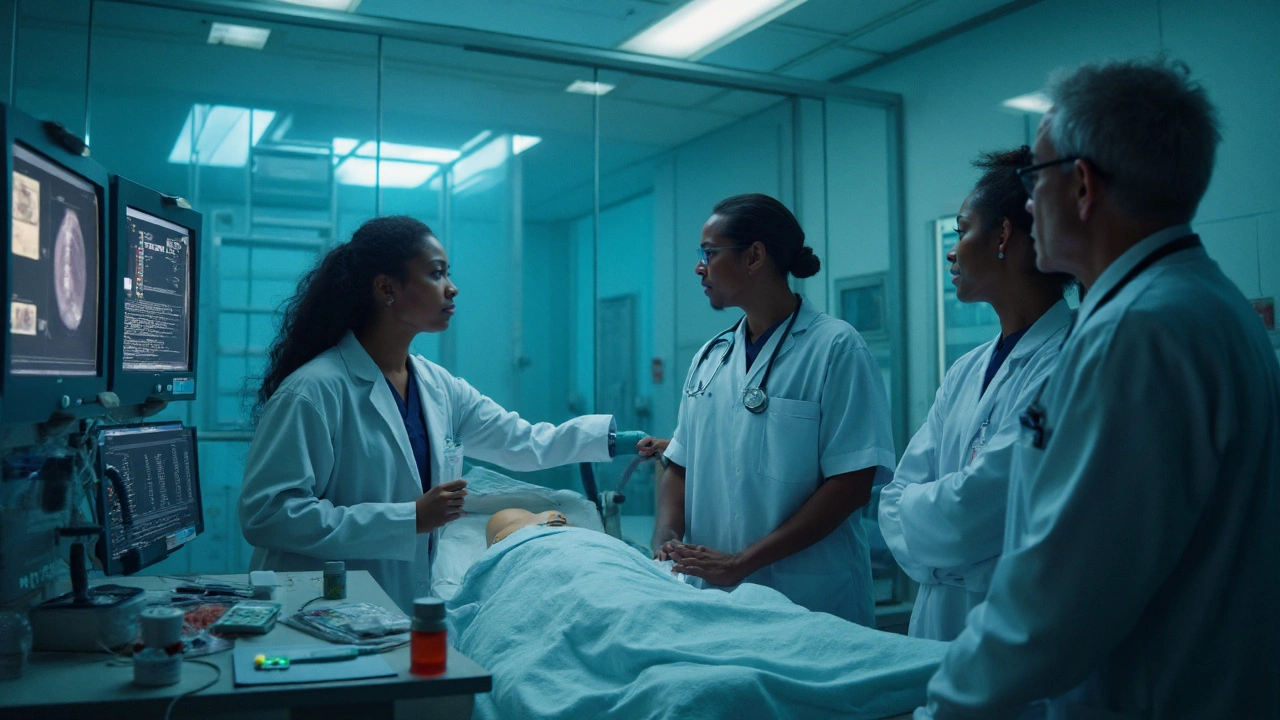MRSA Pneumonia: What It Is and How to Manage It
When the super‑bug MRSA (methicillin‑resistant Staphylococcus aureus) attacks your lungs, you get a tough form of pneumonia. It isn’t just any cough – it’s a stubborn infection that often needs stronger antibiotics and a closer watch. If you’ve heard the term and wonder what to do, keep reading. We’ll break down the signs, the tests, the meds, and some everyday tips to keep the bug at bay.
Spotting the Signs
MRSA pneumonia usually starts with the same symptoms you see in regular pneumonia: fever, chills, shortness of breath, and a cough that may bring up yellow‑green sputum. What makes it stand out is how quickly the fever spikes and how hard it is to shake the cough. Some people feel chest pain that worsens when they breathe deep, and they might notice a rapid heartbeat. If you’ve been in a hospital, nursing home, or have recent skin infections, your risk goes up because MRSA loves crowded, high‑risk settings.
Because the symptoms overlap with other lung infections, you can’t rely on feeling sick alone. The key is to notice how fast you get worse and whether you have any of these red flags: oxygen levels dropping below 92%, confusion, or a sudden need for extra oxygen. If any of those happen, call your doctor right away – early treatment can mean a smoother recovery.
Treating the Infection
The good news is doctors have a few drugs that still work against MRSA. The most common choices are vancomycin and linezolid. Vancomycin is given through an IV and needs blood tests to keep the dose safe for your kidneys. Linezolid can be taken by mouth, which makes it easier for people who can’t stay in the hospital. In some cases, newer antibiotics like daptomycin or ceftaroline might be used, especially if the infection is really severe.
While you’re on antibiotics, stay hydrated, get plenty of rest, and use a humidifier if the air feels dry. Some patients find that chest physiotherapy – gentle tapping on the back – helps loosen mucus so you can cough it out. Always finish the full course of meds even if you feel better early; stopping too soon can let the bacteria come back stronger.
Besides meds, doctors may order a chest X‑ray or CT scan to see how much of the lung is involved. Blood cultures are taken to check if the bacteria have spread to the bloodstream. If the infection is caught early, the scans usually show a smaller area of consolidation, which means a quicker bounce‑back.
Prevention is a big part of staying out of the hospital in the first place. Wash hands often, especially after touching shared surfaces. If you have a wound that’s not healing, keep it clean and covered – MRSA loves open skin. For people living in long‑term care facilities, regular screening and proper cleaning of rooms cuts down the spread.
In short, MRSA pneumonia is serious but manageable when you recognize it fast, get the right antibiotics, and follow simple home‑care steps. If you think you might have it, don’t wait – reach out to a healthcare provider and get the tests done. The sooner you act, the easier the recovery.
Linezolid for Nosocomial Pneumonia: Evidence, Dosing, and When to Use It (HAP/VAP)
Does linezolid work for nosocomial pneumonia? Evidence, dosing, when to choose it over vancomycin, risks, and practical protocols for HAP/VAP in 2025.
